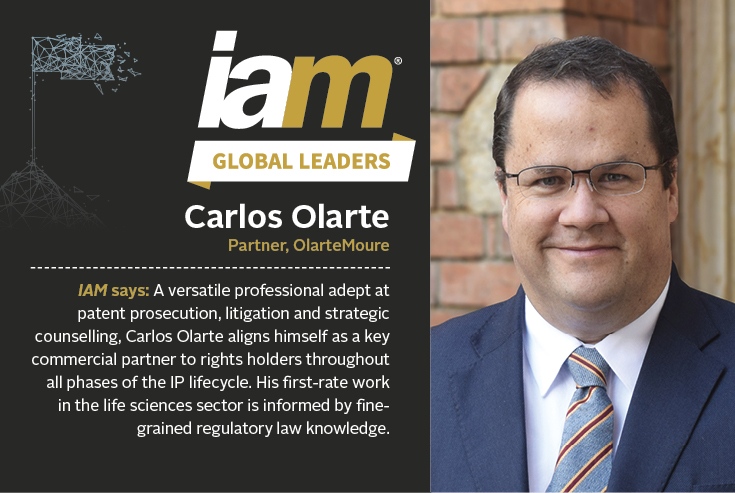What led you to establish your own law firm?
The first driver behind my decision was a desire for greater independence to develop a more patent-centric practice that would not be distracted by the requirements imposed by a general practice firm. For example, being able to dedicate more time to local client development – ‘evangelisation’ as we now call it – was a key part of this objective. The second driver was the wish to simply have my own practice – I always had an entrepreneurial bug that was nagging me to step out and open my own firm.
What does top-class client service look like to you?
Top-class client service stems from building trust and really understanding clients’ needs, opportunities and risks. This requires you to constantly keep astride of industry trends and have honest conversations about a client’s short and long-term goals. There is also the need for persistence, availability and maintaining fluid communication – in good times and bad. Finally, clients do not need theories from their lawyers, they need potential solutions to real-world problems. This often involves digesting an apparently complicated and convoluted situation and distilling it into practical options that will permit intelligent business decisions.
Of which cases that you have worked on are you most proud and why?
Being able to make a tangible difference in a client’s business is a common denominator in all of these cases. First, I am proud of my involvement in the development of the patent portfolio for Panacea-Velvack, a medical device start-up in Cali, Columbia, with funding from a Texas investor, which is seeking to revolutionise cancer and neurological signalling treatments. Aiding AGP (Lima, Peru) to strengthen its patent position in the highly competitive global automotive glazing industry, both in its bullet-resistant and newer e-glass business lines, was also a highlight. Another case of which I am proud was when I represented Plastivit, a Barcelona liquor cap manufacturer, in a regional patent litigation campaign initiated by a large Italian manufacturer. The case ultimately led to Plastivit’s buyout by the plaintiff, where the purchase price was strongly leveraged by our litigation strategy. Finally, assisting Abbott and Novartis in separate compulsory licensing cases (Kaletra and Glivec, respectively) was extremely satisfactory. In both cases, we successfully prevented compulsory licences from being granted, arguing that the patent system was not to blame for the purported effects argued by non-governmental organisations (NGOs) and the Colombian government.
You have worked as an IP adviser in trade negotiations between the Andean countries and the United States, what did this involve?
I had the opportunity to represent the US pharmaceutical research and development industry (including the Pharmaceutical Research and Manufacturers of America and several member companies) as an adviser on Colombian and Andean community patent and regulatory test data protection issues that affected the free trade area (FTA) negotiation and resulted in the FTA text. I maintained dialogue and liaised with the US Trade Representative (USTR), USTR-trusted advisers, the Colombian Ministry of Trade, Andean community officials, government officials from Peru, Ecuador and Bolivia, and relevant industry and NGO stakeholders. I also had the opportunity to develop and suggest edits on white papers and validate opposing positions and potential impact analyses.
How would you characterise the current Colombian patent regime?
From a filing and prosecution perspective, Colombia has a patent-friendly regime. Based on October 2019 Patent and Trademark Office data, the average delay from filing to first-instance decision is a mere 23 months, and overall allowance across all arts stands at 68%. Using Patent Prosecution Highway mechanisms, the allowance rate jumps up to 73%, where 43% of cases are allowed directly, without any office action. That said, Colombia is a relative newcomer and junior player on the global stage. In 2018 only 2,223 patent applications were filed, of which approximately 40% were dominated by foreign pharmaceutical and biotech applications. About 20% of all applications were filed by local applicants. There has been a downward trend in overall applications in 2019, but there are changes in composition (eg, the top three applicants are from the telecoms sector). Colombia is also attractive from a litigation perspective. There is an enormous presumption of validity given the bifurcated infringement and validity routes, where validity can be delayed and will not stay infringement proceedings. Also, preliminary injunctions are relatively straightforward to obtain and a plaintiff need not show that it is working the patent in order to obtain one. Finally, infringements are decided by a specialised IP court.
By: Carlos Olarte
Please visit the IAM platform to view your full profile, as well as all interviews with other global leaders.
The full online version can be found here.







